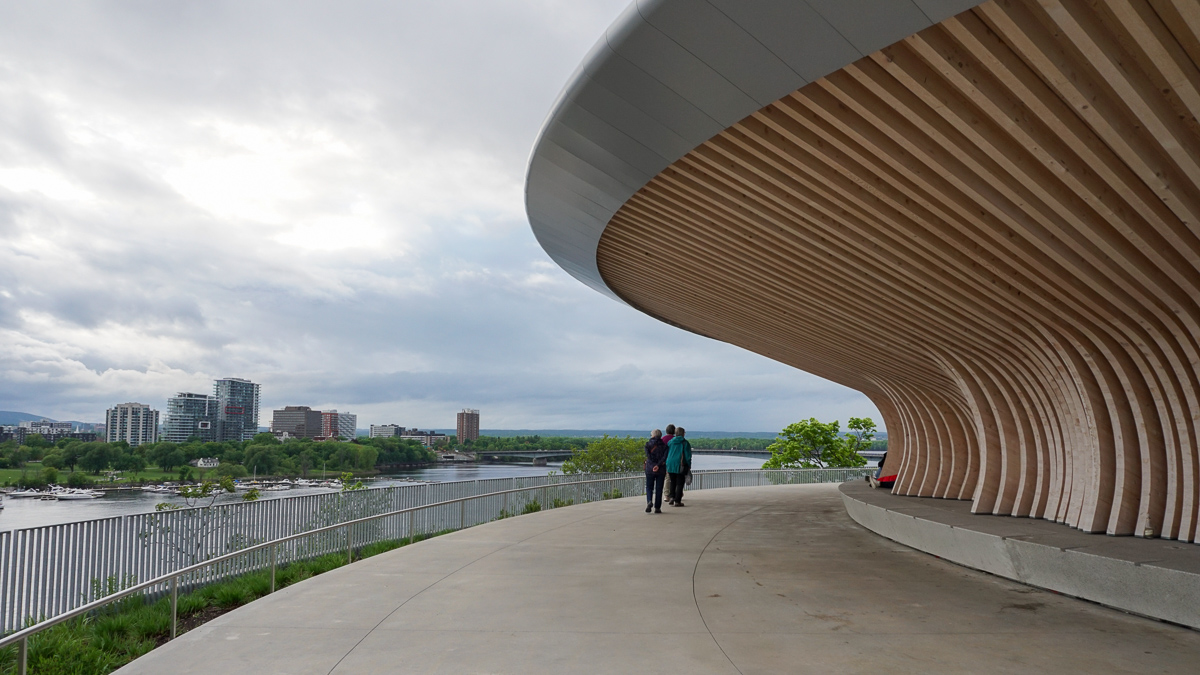The effort to preserve two 80-year-old elm trees in the recently rehabilitated Kìwekì Point reminded designers of one thing not reflected much in the national capital’s downtown landscape: that we are living in relationship to nature.
“Those two trees are probably the main reason for how the pathway system for the park actually worked itself out,” said Garry Meus, a senior landscape architect at the National Capital Commission, who led the $45-million transformation of the high-profile green space between the National Arts Centre and the Ottawa River shore.
After five years of construction, Kìwekì Point, formerly known as Nepean Point, was reopened to the public on May 16. The lookout’s breathtaking view and intentionally river-centric design have generated considerable buzz on Instagram. However, the site isn’t without a contentious history, contributing to mixed reactions from an Algonquin elder and urban Indigenous community members.
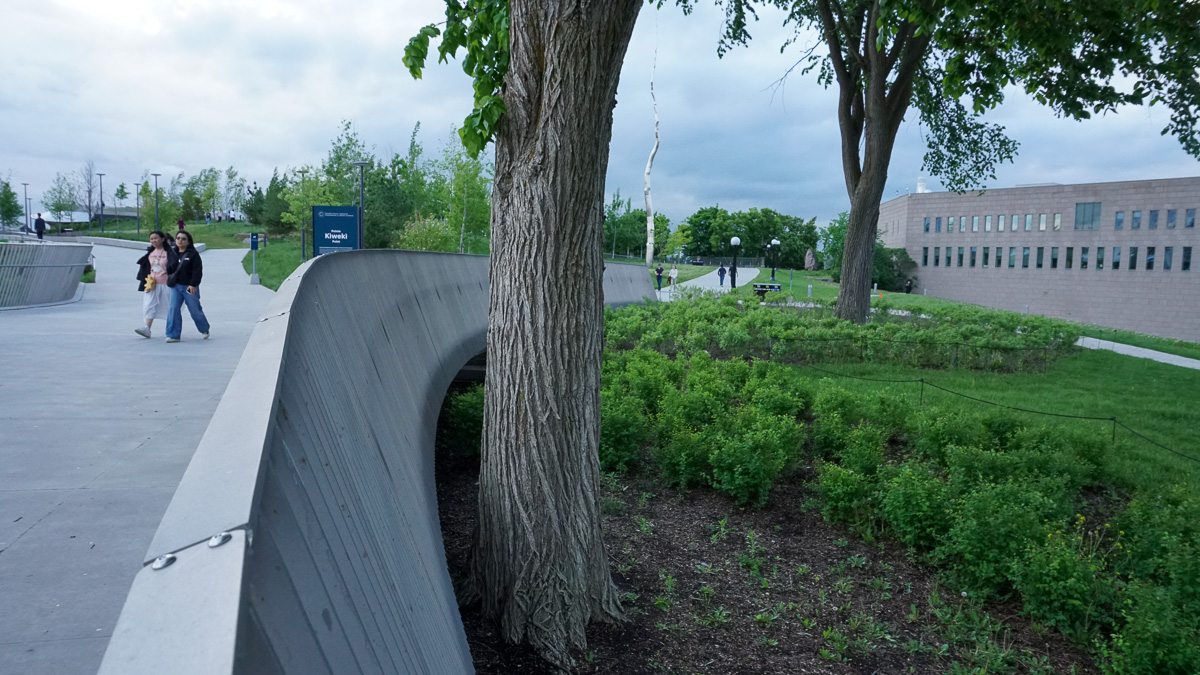
The redesign included new locations for statues of 17th-century French explorer Samuel de Champlain and Kichi Zïbï Innini, which translates to “Great River Man”. Formerly known controversially as the “Anishinabe Scout,” the statue was originally positioned kneeling beneath a propped-up Champlain, a key figure in the colonization of Eastern Canada and one of the first Europeans to reach the future Ottawa when he led an expedition up the Ottawa River in 1613.
The statue of Champlain and the “scout,” unveiled in 1915, was widely criticized for upholding racist stereotypes of Indigenous peoples being subordinate to European explorers and settlers.
In 1999, following significant pressure from various activists and the Assembly of First Nations, the statue was relocated to a more discreet location nearby in Major Hill’s Park, where it remained for 21 years.
According to a 2023 Ottawa Citizen report, Kichi Zïbï Innini was placed in storage in 2020 while redevelopment of the point began. Now, he sits atop a moderate slab of rock on the north side of the lookout peninsula.
Algonquin Anishinabe Elder Claudette Commanda from Kitigan Zibi Anishinabeg First Nation said she hadn’t visited the reopened park yet but was “frustrated” by Champlain’s prominence on the lookout’s south side, visible when walking with her son through Major Hill’s Park the weekend before Kìwekì Point reopened.
“Mind you, when you walk on the path, eventually you’re going to come to the (Great) River Man,” she said in an interview with Capital Current. “But yes, even at that, the (Great) River Man should be up there, and Champlain should not be there. That’s coming from me as a First Nations person because we’ve always been out of mind, out of sight, despite the fact that there may have been good intentions.”
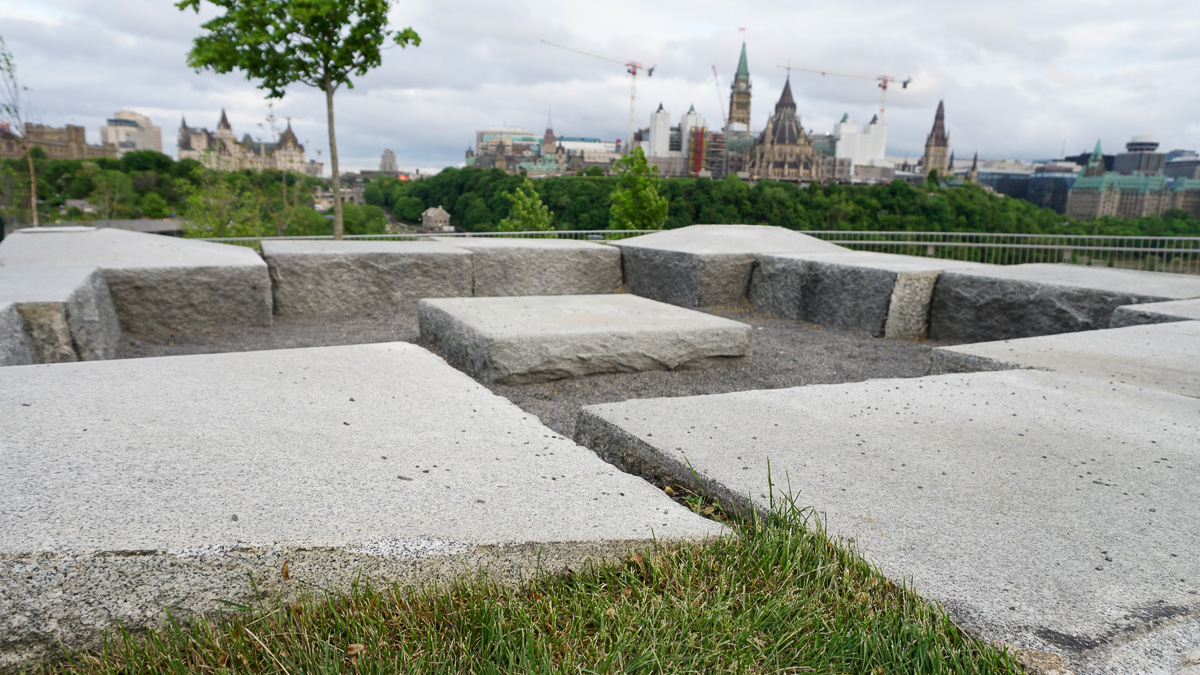
Nicholas Gosselin, a senior associate at Janet Rosenberg & Studio, the Toronto-based firm that developed the winning design for Kìwekì Point, said that many options for the Champlain monument were discussed. Ultimately, the decision was made to integrate him into the story of the place, but not at the top of the lookout, so he was “a point that you pass, but not the culmination of your journey.”
“Lowering (Champlain) was a no-brainer,” Gosselin said. Additionally, designers incorporated the stones that previously propped up the Champlain monument into a sunken seating area at the top of the lookout.
“These stones that were about supporting this one figure are now supporting new conversations, new dialogues,” he said.
Design team: The river as the mediator
According to Brittney Anne Bos, a project manager at ERA Architects, which handled the interpretation side of the park’s redesign, “breakthroughs” began to happen when teams started viewing the Kichi Zībī, or the Ottawa River, as the principal mediator of the site, rather than a human figure playing that role.
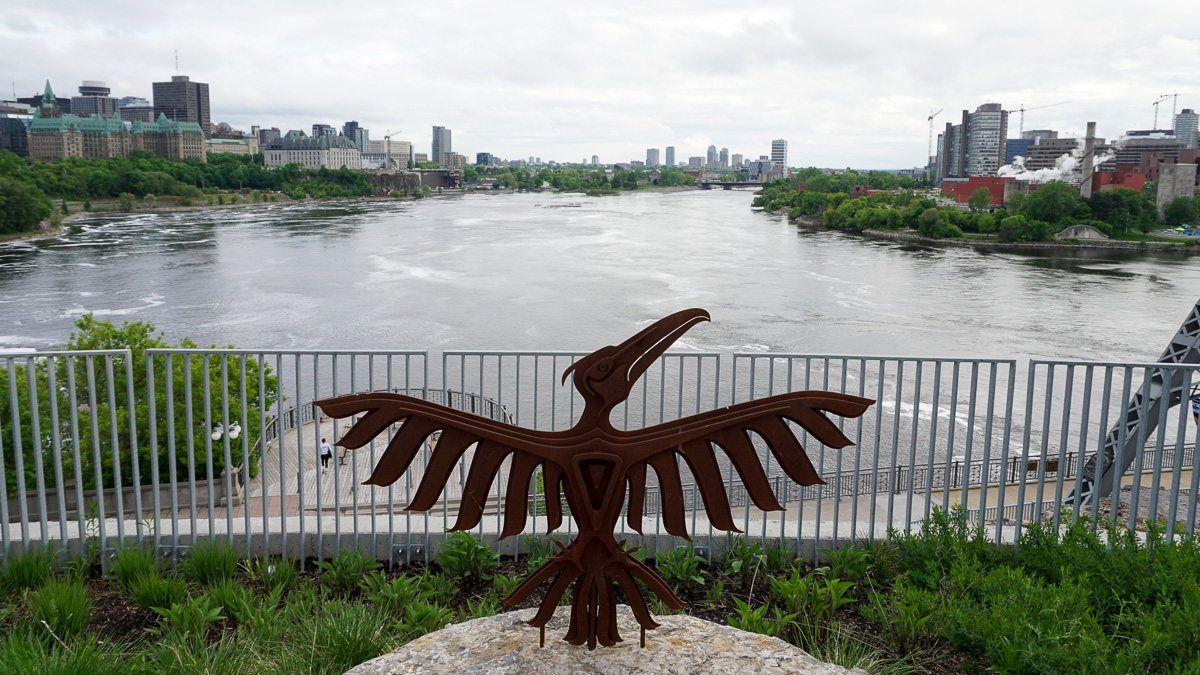
“We could then start to see some common ground about how this monument could be viewed through the lens of the river,” she said about the challenge of folding different perspectives into the design.
Notably, the park also contains artwork of seven culturally significant beings to the Algonquin Anishinabeg. As a part of the consultation process, community members of Kitigan Zibi Anishinabeg and Pikwàkanagàn First Nation wrote and translated texts that accompany the beings into Anishinabemowin.
“Coming from a very traditional interpretation perspective, this project did something very different, in that it looked to the natural elements, specifically the river, but also the ecological elements, the beings that inhabit the river, and (it) really centred interpretation of those elements,” Bos said.
For Slava Bielkin, who runs the Instagram page outdoor.happens with his partner, Lena Tokmakova, Kìwekì Point felt like something worth sharing with their almost 5,000 followers.
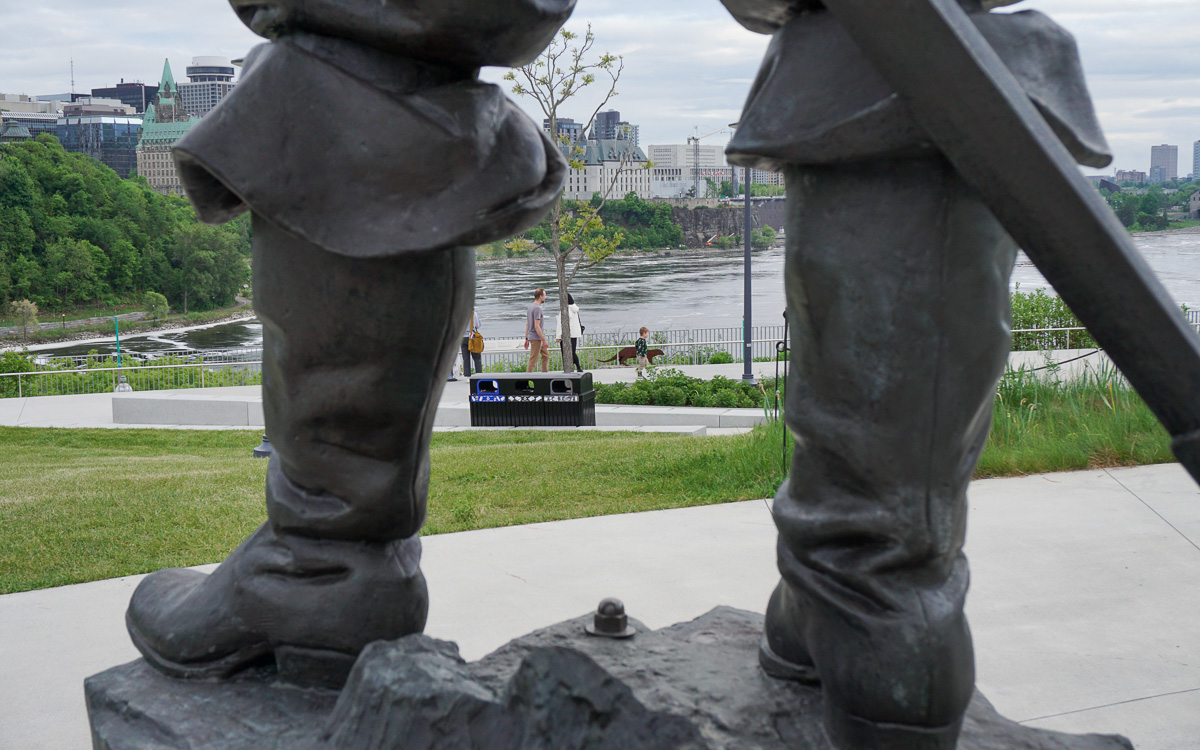
Bielkin, originally from Ukraine, said he thought the addition of the beings was “meaningful” and noted the mental health benefits sites like Kìwekì offer urban residents.
“Calm places – those are exactly what stimulate people to go outside,” he said.
Emotionally charged site for some
Still, Elder Commanda said she worries Champlain’s presence may give newcomers the wrong idea about just whose land they are on when enjoying the outdoors in the National Capital Region.
“Champlain did not discover Ottawa,” she said. “This was always Algonquin land and will always be Algonquin land.”
Commanda said she also thought the existing monument of trade negotiator Algonquin Chief Tessouat, currently located across the river on the grounds of the Canadian Museum of History, would have been more appropriate than Kichi Zïbï Innini for Kìwekì Point, given the documented history of interactions between Tessouat and Champlain.
For others, the Kichi Zïbï Innini provides valuable representation. Urban Iroquois photographer Jeff Thomas said he began photographing the figure in the 1990s as a means to identify the urban Indigenous experience through his work, which is driven by the question: “How do you make the invisible visible?”
Through his work, Thomas critiqued the statue’s first removal to Major Hill’s Park in 1999, highlighting the historical pattern of Indigenous peoples being forced to relocate. Thomas said he could not comment on Kìwekì Point because he hadn’t yet visited the lookout, but said he envisioned a different home for Kichi Zïbï Innini down the river: Victoria Island, a highly symbolic place for Ottawa-area Indigenous people because of its proximity to the sacred Chaudière Falls cataract.
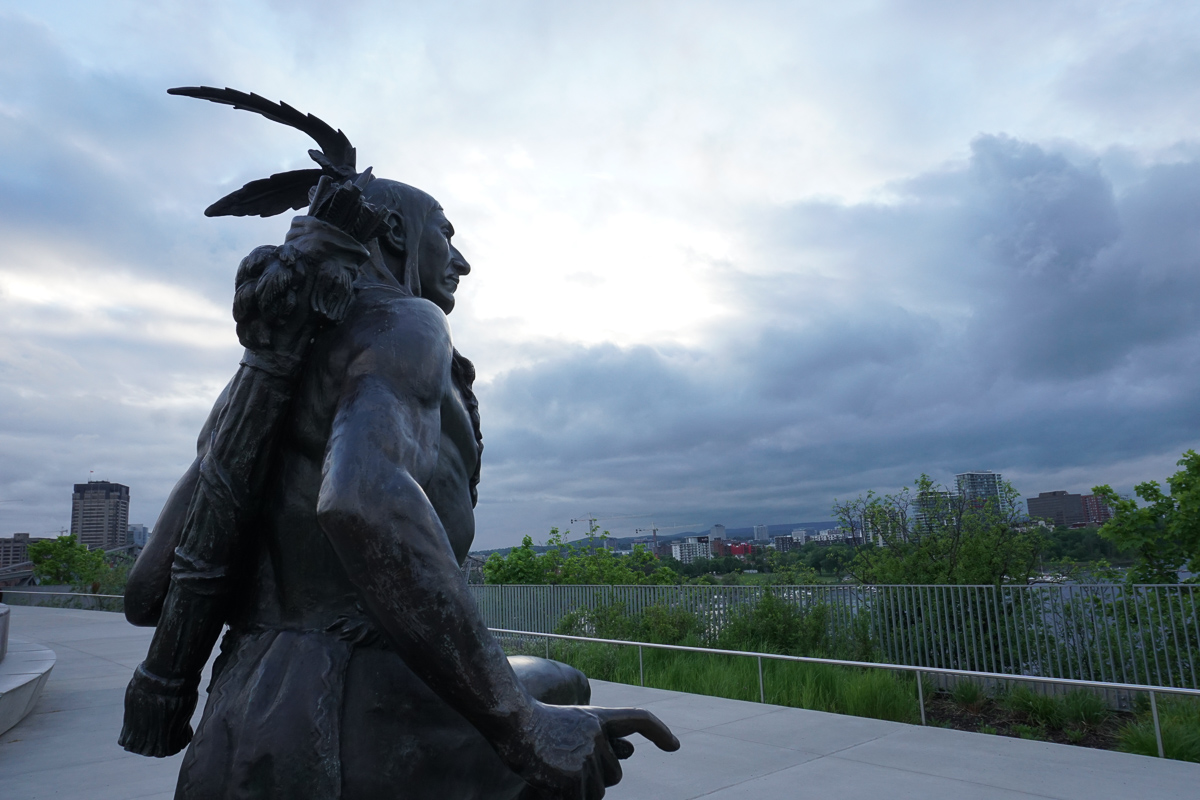
The immersive feeling of being surrounded by the river when standing on the island is what drew Thomas in. This year, his vision came to life with a virtual reality project at Carleton University, where the statue was placed at the tip of the island.
“There’s this feeling of (the river) talking to you, and it’s just an amazing feeling,” he said about the alternate spot.
Coincidentally, the NCC’s Meus described a similar feeling intended to be evoked by Kìwekì Point.
“The idea is to also sense the river… Being able to hear what the river is giving you, but also what nature is giving you,” he said.

